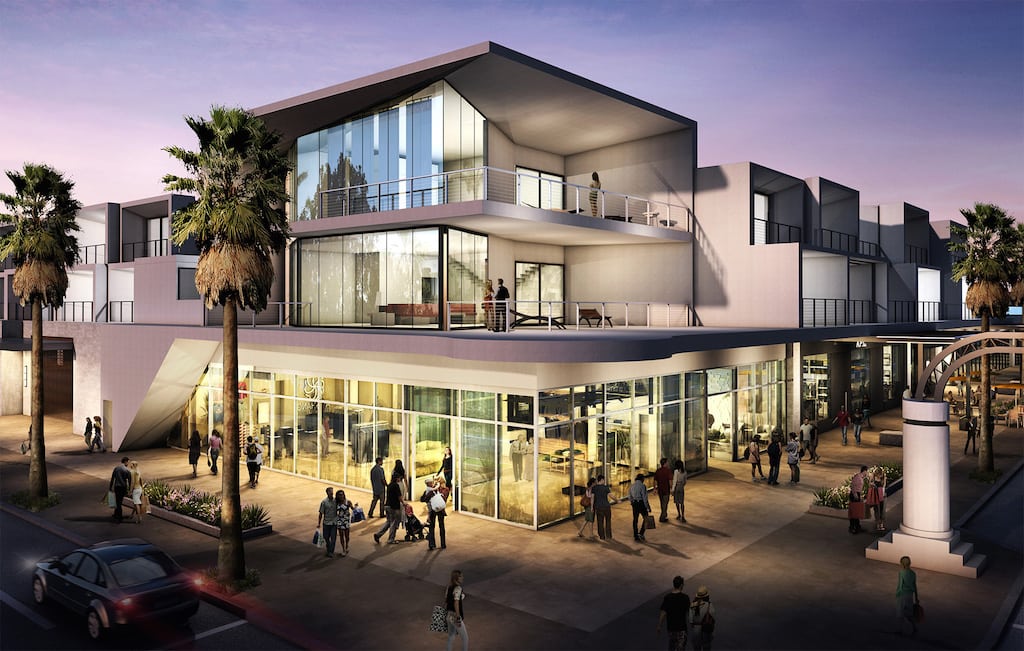Andaz Hotels’ Development Pipeline Kicks Into Overdrive

Skift Take
Andaz Hotels is scheduled to open nine new properties by 2018, basically doubling its global portfolio.
In chronological order of opening, the new destinations are: Delhi, Ottawa, Scottsdale, Riviera Maya in Mexico, Palm Springs, Sanya in China, Singapore, Munich and Bali.
The Hyatt Hotels-operated brand is significant in the evolution of hospitality in the 21st century because it was the first corporate chain to prioritize local travel, which back in 2007 during the company’s launch was just beginning to gain prominence.
In fact, we couldn’t have produced the seminal Skift Trends Report—The Rise of Local in Hospitality—in 2013 without Andaz.
In order to show that major hotel brands were going to begin to differentiate their value proposition based on providing access to local people and neighborhoods, we needed a corporate brand doing something innovative in that area.
At the time, boutique hotel groups like Ace Hotel and Morgans Hotels were actively showcasing local chefs, local bands and other cultural influencers. But Andaz was the only company attached to a legacy brand doing the same, which supported our case that the demand for local travel and cultural immersion was going to emerge as a mainstream trend for all consumer markets.
“A key part of our brand has always been about inspiring creativity in our guests by connecting them to local culture,” says Jonathan Frolich, VP, global brands for Andaz. “We want to be an enabler to maybe help guests think differently about their jobs, their lives, and introduce them to like-minded individuals that might spark new perspectives. The whole hotel is designed around that social environment, not only between guests and other guests, but between hosts and guests, and between guests and locals.”
Moving forward, the Andaz mission is to push forward a new level of local by integrating the properties and their guests more deeply into cool neighborhood experiences. Or, as is the case in Delhi, the new Andaz property is providing a more destination-specific guest experience.
This represents a bit of shift for hotel operators who have previously incorporated local travel into the guest experience by bring local suppliers and creative people into the hotels. Whereas now, there’s a growing emphasis on partnering with local companies and organizations and developing travel experiences outside the hotels.
The demand is clearly there, although that does move the guest away from revenue generating outlets located inside the hotels.
Illustrating that shift, the new Andaz Scottsdale Resort & Spa is opening next summer in Paradise Valley near the Cattle Track Arts Compound. Leisure guests will have special access privileges to meet the artists, and meeting planners will be able to incorporate the space into their programs.
The resort will consist of 201 bungalow-style guest rooms with mid-century inspired interiors and architecture channeling the 1950’s desert art scene, influenced by designers such as Alexander Girard, Frank Lloyd Wright and Paolo Solari.
“Cattle Track is incredibly inspiring because it embodies important, quality work from local artists that truly defines the art and culture scene in Scottsdale,” says Scott Mason, GM of Andaz Scottsdale. “We’ve really taken the time to explore the nuances of the local neighborhood, and I’ve developed a friendship with Janie Ellis. Her parents started the artist colony back in the early 1900s.”
In Canada, the new 200-room Andaz Ottawa Byward Market will be located next to one of the largest fresh markets in the country. Established in 1826, Byward Market today is an energetic cultural platform hosting events such as “In Monet: A Bridge to Modernity,” which adds a whole new level of programming opportunities for Andaz to leverage.
The Andaz Salon
Every Andaz property hosts Andaz Salon events that bring together local cultural personalities, local residents, and visiting guests that evoke the spirit of 19th century European literary salons.
They provide a way for guests to plug into the local community like few other mainstream hotel flags offer. For marketing purposes, they also provide a wide array of content opportunities showcased on the Andaz Tumblr blog.
Andaz Tokyo Toranomon Hills, for example, hosted an Andaz Salon event last month themed around “Autumn Flowers Dining.” The Andaz Tavern chefs collaborated with Danish flower artist Nicolai Bergmann to create “edible artwork” using seasonal produce and flora. The dinner menu included dishes such as chilled scallops served on Bergmann’s signature flower box.
“At Andaz Scottsdale, we’ll provide a platform for Cattle Track artists to share their craft and inspire guests and locals’ own creativity through our Andaz Salon programming,” says Mason. “It all goes back to the Andaz ethos of immersing guests in local culture and sparking their curiosity.”
Andaz was not only the first corporate hotel brand to introduce a local mindset, it was also the first to introduce a full scale blog at andazsalon.com to promote that vision. However, a few years ago, Andaz moved that blog from a self-hosted site to Tumblr, and it lost a little something in the process.
Whereas there used to be highly engaging long form posts going into detail about different salon events, now the content is considerably lighter. There are still some interesting stories, like this one chronicling two artists who created a walking street map in one of the rooms at Andaz Liverpool Street to show interesting local spots in London.
But the move to more “snackable” content denies the buzzy creative talent that goes into developing the Salons. It diminishes the overall virtual engagement and abandons avid brand followers.
Frolich says there’s discussion to ramp up the volume of content, because many of the other corporate hospitality brands have since followed Andaz’ lead and moved heavily into the content game.
Breaking Down Barriers
Since the birth of the brand, Andaz has attempted to remove barriers between the staff and guests to create a more social vibe. It was one of the first brands to do away with registration desks, for example.
In the second floor meeting space at Andaz 5th Avenue in Manhattan, one of the meeting rooms has tall windows framing the historic New York Public Library building. Connected to that, there’s huge kitchen island in the middle of the residential-style prefunction area.
This should be the model for every corporate hotel meetings environment everywhere. Meetings would definitely become a lot more productive because you actually want to hang out here.
“That’s not a demonstration kitchen,” says Frolich, while we’re standing in the space together. “We built it this way because every great event ends around the kitchen. So this isn’t a case where you’re looking at the chefs through a little window, and saying, ‘Hey, look, they’re cooking something.’ Here you’re actually helping the chefs stir the sauce.”




